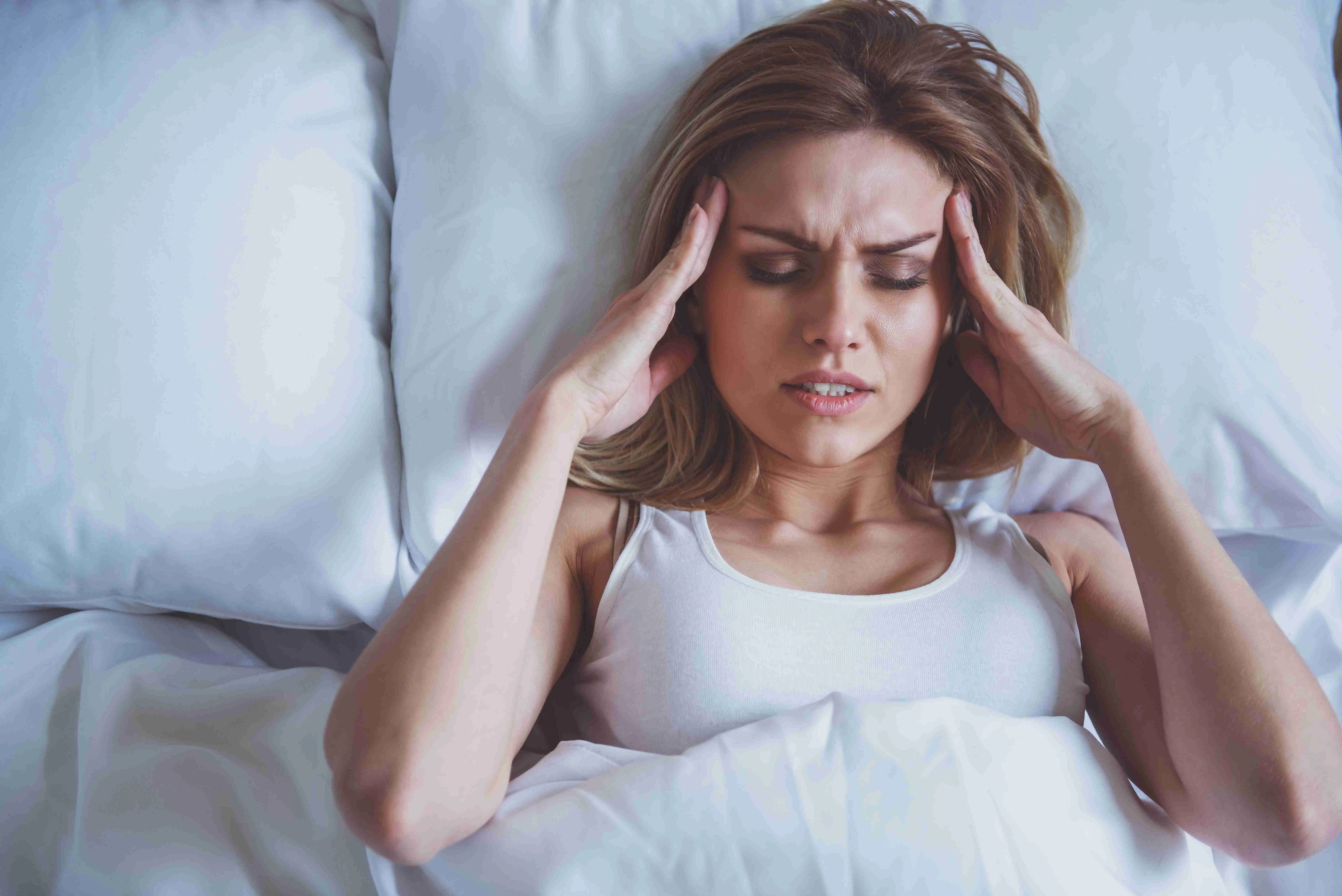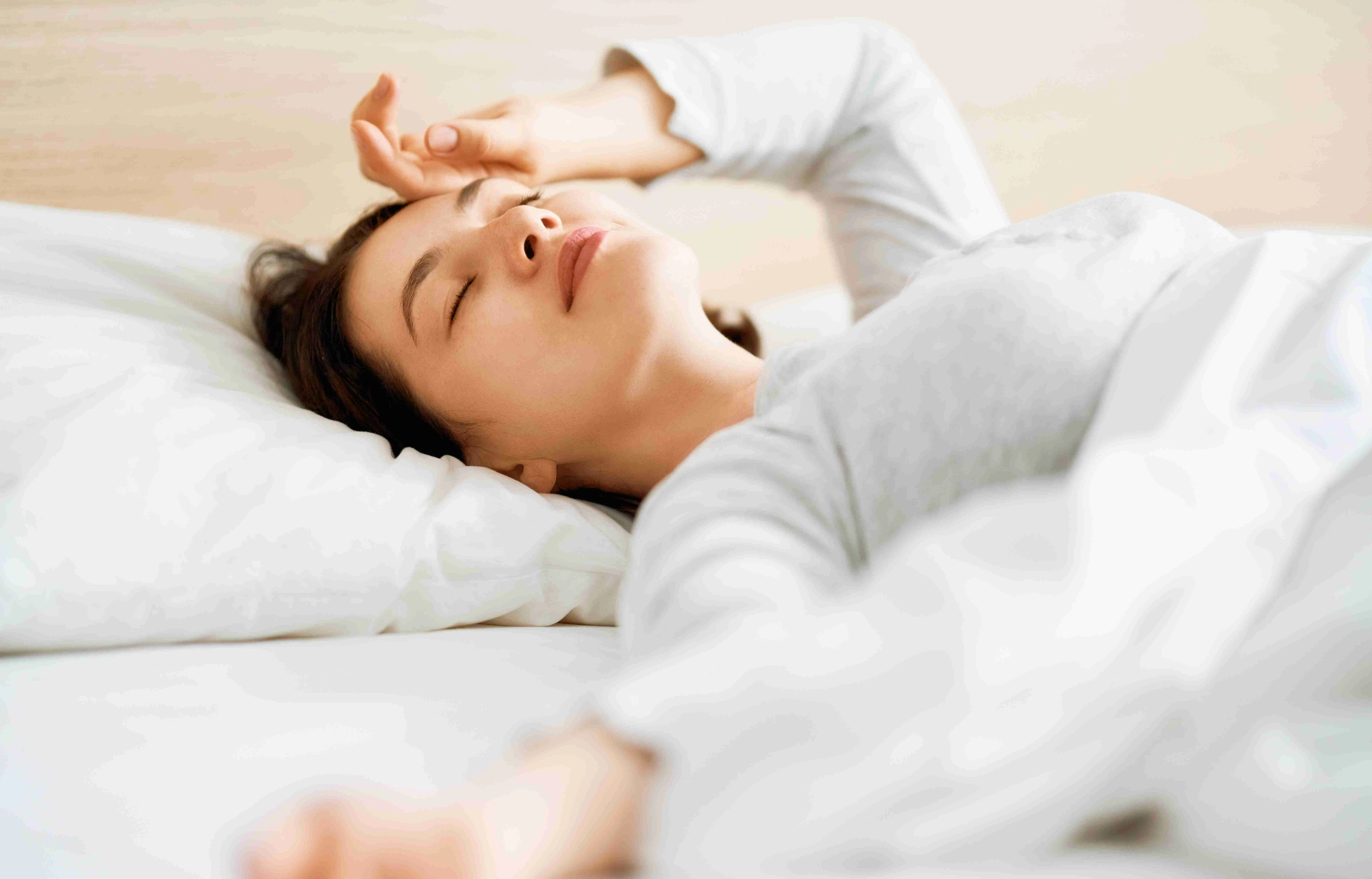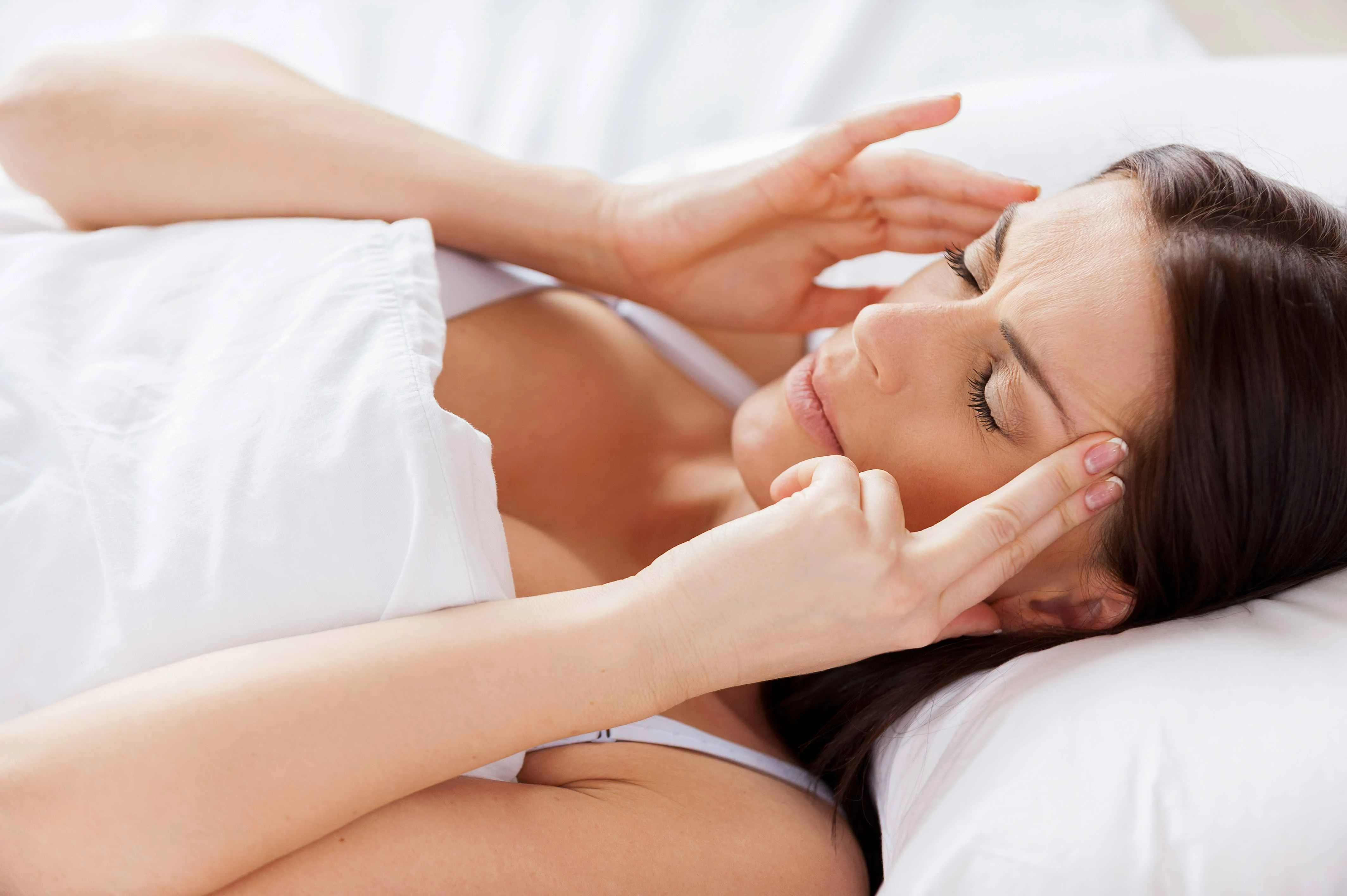Sleep is a crucial aspect of our lives, and prioritizing getting quality sleep is the key to a better and healthier life. Since sleep is deeply connected to overall physical health, disruptions in rest can contribute to or worsen various medical conditions, including migraines.
However, many disturbances could impact the quality of our sleep, whether they are environmental factors or medical conditions, and one of the most prominent medical conditions that many people suffer from is migraines.
In this article, we will take a deeper look at migraine and its bidirectional relation with quality sleep, as well as its symptoms and how to manage it.
What is a migraine?

A migraine is a neurological condition characterized by intense, throbbing headaches typically on one side of the head.
These headaches are often accompanied by symptoms such as nausea, vomiting, and sensitivity to light and sound.
Migraines can last for hours to days, significantly impacting a person's daily life and productivity.
Common Migraine Triggers
There are multiple triggers for migraines, and understanding common migraine triggers is crucial for managing this chronic condition effectively.
- Stress: One significant trigger is stress, which can lead to muscle tension and changes in brain chemicals, ultimately triggering a migraine. It is essential for individuals prone to migraines to find healthy ways to cope with stress, such as relaxation techniques, exercise, and mindfulness practices.
- Diet: Foods like aged cheese, processed meats, and foods containing MSG or artificial sweeteners have been known to trigger migraines in some individuals. Additionally, alcohol, particularly red wine, and caffeinated beverages can also be culprits.
- Changes in Sleep Patterns: Changes in sleep patterns or lack of sleep can also trigger migraines in some people. Ensuring a regular sleep schedule and practicing good sleep hygiene can help reduce the likelihood of experiencing migraines due to sleep disturbances.
- Hormonal Changes: Hormonal changes, particularly in women, can trigger migraines. Fluctuations in estrogen levels during menstruation, pregnancy, or menopause can lead to migraines in some women. Keeping track of hormonal fluctuations and working with healthcare providers to manage hormonal imbalances can help reduce the frequency and severity of hormonal migraines.
Migraine Symptoms
Migraine symptoms can vary in intensity and duration, often causing significant discomfort and disruption to daily activities.
Understanding the signs and symptoms of migraines is essential in managing and treating this neurological condition effectively.
Prodrome (Early Warning Signs)
Many individuals experience prodrome, which are early warning signs that a migraine attack is imminent.
Being aware of these early warning signs can help migraine sufferers better cope with their condition and improve their quality of life.
- Mood Changes: Mood changes are a common feature of the prodrome, with individuals reporting feelings of irritability, confusion, or heightened sensitivity to stimuli. This shift in mood can be unsettling for those experiencing it, often signaling the onset of a migraine episode.
- Food Cravings: Food cravings are another prevalent symptom during the prodromal phase. People may find themselves desiring specific types of food, especially those high in sugar or carbohydrates. These cravings can be intense and difficult to ignore, potentially serving as a clue that a migraine is on the horizon.
- Frequent Yawning: While yawning is a normal bodily function that helps regulate oxygen levels and maintain alertness, an increase in yawning frequency during the prodromal phase of a migraine can be indicative of an impending attack.
- Neck Stiffness: Neck stiffness can cause discomfort and limited mobility, serving as a warning sign for those familiar with their migraine patterns.
Aura (Occurs in Some Migraines)
An aura is a set of sensory disturbances that can precede or accompany a migraine headache.
These disturbances can manifest as visual changes, such as seeing flashing lights or zigzag lines, or sensory changes like tingling in the face or hands.
- Visual Disturbances: These visual disturbances can include seeing flashing lights, zigzag lines, blind spots, or even temporary vision loss.
- Tingling or Numbness in the Face or Hands: One common aura symptom is tingling or numbness in the face or hands, which can be alarming for those experiencing it. This sensation is often described as a pins-and-needles feeling, and it can be accompanied by other sensory disturbances.
- Difficulty Speaking: Some individuals may experience difficulty speaking during a migraine aura. This difficulty in speaking can present as slurred speech, trouble finding the right words, or even temporary aphasia.
- Weakness on One Side of the Body: This symptom, known as hemiplegic migraine, can be alarming for those who experience it. Weakness on one side of the body during a migraine aura may last from a few minutes to several hours.
- Hearing Noises or Ringing in the Ears: One common symptom of aura is hearing noises or ringing in the ears. This auditory distortion can be distressing for those experiencing it.
Attack Phase (Main Migraine Symptoms)
During the attack phase of a migraine, individuals may experience various debilitating symptoms that can significantly impact their daily lives.
The main migraine symptoms during this phase often include intense throbbing or pulsing headaches, typically on one side of the head.
- Severe Headache: This headache is typically pulsating or throbbing and is often felt on one side of the head. It can be so intense that it interferes with daily activities, leading to sensitivity to light, sound, and even touch.
- Nausea and Vomiting: The nausea can be quite severe, making it difficult to keep food down and leading to dehydration if not managed properly. Vomiting can further exacerbate the discomfort already caused by the migraine headache.
- Dizziness or Vertigo: Dizziness can manifest as a feeling of lightheadedness or a spinning sensation, while vertigo is characterized by a false sense of movement.
- Blurred Vision: Blurred vision or visual disturbances can occur during a migraine attack. This can manifest as seeing flashing lights, zigzag lines, or even temporary loss of vision in some cases.
Postdrome (Migraine Hangover)
After the intense pain of a migraine attack subsides, individuals may experience what is known as the postdrome phase, often referred to as the "migraine hangover."
This phase can linger for hours or even days after the migraine episode, leaving sufferers feeling drained, confused, and physically weak.
- Extreme Fatigue: One common symptom during this postdrome phase is extreme fatigue, where individuals feel drained, lethargic, and lacking in energy. This fatigue can be debilitating, making it challenging for individuals to resume their daily activities effectively.
- Brain Fog: Individuals in the postdrome phase may also experience brain fog, a cognitive symptom that can impact concentration, memory, and overall mental clarity. Brain fog can make it difficult for individuals to focus, think clearly, or engage in tasks that require mental acuity.
- Mild Headache or Lingering Discomfort: One common symptom during the postdrome phase is lingering discomfort, such as a mild headache. This headache may not be as intense as the initial migraine pain but can still cause discomfort and impact daily activities.
- Sensitivity to Light and Sound: Sensitivity to light and sound is another common symptom during this phase. Sensitivity to light, or photophobia, can exacerbate the discomfort experienced by individuals, making it challenging to be in bright environments or exposed to harsh lighting.
How Sleep Affects Migraines

Understanding how sleep affects migraines is crucial for managing this debilitating condition.
Insufficient sleep, irregular sleep schedules, or poor sleep habits can trigger migraines or worsen them.
Lack of Sleep
Individuals who do not get an adequate amount of sleep are more prone to experiencing migraines.
This is because the body needs sufficient rest to function properly, and when it is deprived of sleep, it can lead to an increase in stress levels and changes in hormone levels, both of which are common migraine triggers.
Oversleeping
Oversleeping disrupts the body's natural rhythm, leading to an imbalance that can potentially exacerbate migraine symptoms.
Long sleepers may experience an increased frequency of migraines if they consistently sleep more than the recommended 7-9 hours per night.
Conversely, short sleepers who consistently get less than the recommended amount of sleep may also be at risk for migraines. It is essential for migraine sufferers to maintain a consistent sleep schedule, aiming for the optimal amount of sleep each night to help manage their condition.
Irregular Sleep Patterns
Irregular sleep patterns, such as inconsistent bedtimes or waking up at different times each day, can also contribute to the onset of migraines by disrupting the body's internal clock or circadian rhythm.
Sleep Disorders
Sleep disorders such as insomnia, sleep apnea, and restless leg syndrome can play a significant role in triggering or exacerbating migraines.
- Insomnia: Insomnia, characterized by difficulty falling asleep or staying asleep, can lead to increased stress, which is a common migraine trigger. Lack of quality sleep can also make individuals more sensitive to potential migraine triggers like bright lights or loud noises.
- Sleep Apnea: Sleep apnea, a condition where breathing repeatedly stops and starts during sleep, can result in decreased oxygen levels in the body, leading to headaches and migraines.
- Restless Leg Syndrome: Restless leg syndrome causes an uncontrollable urge to move the legs, can disturb sleep patterns, resulting in insufficient rest, and increases migraine susceptibility.
How do migraines affect sleep?
The relationship between migraines and sleep is complex and bidirectional, as individuals who suffer from migraines are more likely to experience sleep disturbances, such as difficulty falling asleep, staying asleep, or waking up feeling refreshed.
Pain Disrupts Sleep
The throbbing or pulsating head pain associated with migraines can make it difficult for individuals to find a comfortable sleeping position, leading to restlessness throughout the night.
Poor Sleep Quality
Individuals suffering from migraines may experience fragmented sleep patterns and find it difficult to achieve deep, restorative sleep.
This poor sleep quality can, in turn, trigger more frequent and severe migraine episodes, creating a detrimental cycle.
Postdrome Fatigue
The aftermath of a migraine, known as postdrome fatigue, can further disrupt sleep by causing feelings of exhaustion and lethargy that persist even after the headache has subsided.
This cycle of disrupted sleep due to migraines can create a vicious loop, as inadequate rest can trigger more frequent or severe migraines, perpetuating the problem.
Tips for Managing Sleep to Reduce Migraines

Proper sleep management is crucial in reducing the frequency and intensity of migraines. Quality sleep is essential for overall health and can significantly impact migraine patterns.
Maintain a Regular Sleep Schedule
One of the key strategies for reducing migraines is to prioritize a consistent sleep routine. It is essential to maintain a regular sleep schedule by going to bed and waking up at the same time every day, even on weekends.
Disruptions in sleep patterns can trigger migraines in susceptible individuals.
Create a Relaxing Bedtime Routine
Creating a relaxing bedtime routine is essential in managing sleep to reduce migraines.
It is important to create a calming environment in your bedroom by minimizing noise and light and maintaining a comfortable temperature.
Engaging in relaxing activities before bed, such as reading a book or taking a warm bath, can signal to your body that it is time to wind down.
Diet and Hydration Before Bed
One effective way to improve sleep quality and potentially reduce migraines is by paying attention to your diet and hydration before bedtime.
Avoiding heavy meals, caffeine, and alcohol close to bedtime can help prevent disruptions in your sleep cycle. Opting for a light, balanced snack and staying hydrated throughout the day can promote better sleep. Know more: is it bad to eat before bed?
Manage Stress
Managing stress is crucial in preventing migraines. Stress can lead to poor sleep quality, which in turn increases the likelihood of experiencing migraines.
Engaging in relaxation techniques such as deep breathing, meditation, or yoga can help alleviate stress, enhance mental health, and promote better sleep.
Address Sleep Disorders
Seeking treatment for any underlying sleep disorders, such as insomnia or sleep apnea, can also play a key role in reducing the frequency and intensity of migraines.
FAQs
Is sleep important to migraine relief?
Consistent sleep patterns and sufficient rest can contribute to better migraine management. Additionally, practice good sleep hygiene, such as creating a calming bedtime routine and maintaining a comfortable sleep environment.
What are the risk factors of migraine?
A family history of migraines makes it more likely that you will get them yourself. Hormonal changes, especially in women during menstruation, pregnancy, or menopause, can also make migraines more likely.
When should I go to a doctor regarding migraine?
If you are experiencing severe or frequent migraines, it is advisable to consult a doctor. Seeking medical attention for migraines is crucial when the headaches start affecting your daily life and functioning.
Can taking naps help with migraines?
Taking naps can indeed be beneficial in managing migraines. Short naps can help alleviate migraine symptoms, especially when taken at the onset of a headache.
Conclusion
The relationship between migraines and sleep is intricate and bidirectional. Addressing sleep disturbances and prioritizing healthy sleep habits are essential components of comprehensive migraine management.
By identifying and addressing sleep-related triggers, individuals with migraines can potentially reduce the frequency, duration, and intensity of their headaches, leading to an improved quality of life.
Karen Barnard
Karen is a Human Movement Science expert and a certified sports nutrition and massage therapist. At Sleepiverse, she combines her passion for human movement science and sleep health to educate herself and her readers about healthier sleep. In addition to writing articles, Karen manages a fitness studio offering private training, athletic conditioning, and sports massage therapy. She focuses on providing people with a holistic environment for people to reach their health goals, often incorporating stretch therapy to promote mental tranquillity and help people improve their sleep.


